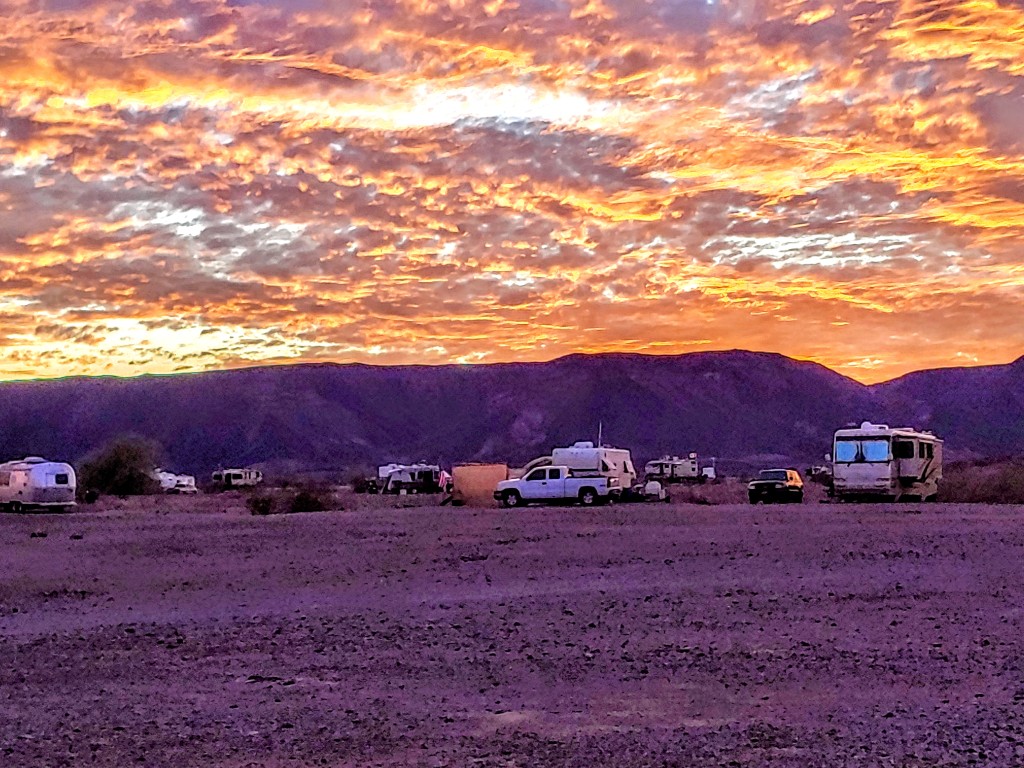-
Hunky Dory is live!
Finally! I have finally finished my latest book entitled “Hunky Dory”. It will be available directly through me or through Amazon. My profit margin is much better on direct sells and it’s more rewarding selling directly, especially if it is in person (as opposed to mailing the book out). The books of which I ordered…
-
Hawk’s Latest Book nearing completion
Hawk’s latest book is nearing completion! Up to 180 pages as of today. My longest book so far. Over 100 beautiful color photos and some unbelievable dory related stories, historical and present day. Here is an excerpt. All material is copyrighted.
-
Dodging Covid
Joshua Tree National Park Well, here we are in January of 2021 and I have not posted since last May. The reasons are many, but Covid-19 is the main one. Lets go back to the time when my traveling partner and I left the Yuma AZ area, where we had wintered at Imperial Dam BLM…
-
Wintering at Imperial Dam and Damage Control

© Hawk Hickok Hickman, 2008-2019. Unauthorized use and/or duplication of this material without express and written permission from this blog’s author and/or owner is strictly prohibited. Excerpts and links may be used, provided that full and clear credit is given to Hawk Hickok Hickman and harleyhawk43.wordpress.com, with appropriate and specific direction to the original content. ************************************************************************…
-
Preparing for Year Ten
© Hawk Hickok Hickman, 2008-2019. Unauthorized use and/or duplication of this material without express and written permission from this blog’s author and/or owner is strictly prohibited. Excerpts and links may be used, provided that full and clear credit is given to Hawk Hickok Hickman and harleyhawk43.wordpress.com, with appropriate and specific direction to the original content. ************************************************************************…
-
Year Ten of Full Time RVing
© Hawk Hickok Hickman, 2008-2019. Unauthorized use and/or duplication of this material without express and written permission from this blog’s author and/or owner is strictly prohibited. Excerpts and links may be used, provided that full and clear credit is given to Hawk Hickok Hickman and harleyhawk43.wordpress.com, with appropriate and specific direction to the original content. Hawk…
-
Year Nine of full time RV Living
© Hawk Hickok Hickman, 2008-2019. Unauthorized use and/or duplication of this material without express and written permission from this blog’s author and/or owner is strictly prohibited. Excerpts and links may be used, provided that full and clear credit is given to Hawk Hickok Hickman and harleyhawk43.wordpress.com, with appropriate and specific direction to the original content.…
-
Another year flies By!
© Hawk Hickok Hickman, 2008-2018. Unauthorized use and/or duplication of this material without express and written permission from this blog’s author and/or owner is strictly prohibited. Excerpts and links may be used, provided that full and clear credit is given to Hawk Hickok Hickman and harleyhawk43.wordpress.com, with appropriate and specific direction to the original content.…
-
Wintering in Florida
© Hawk Hickok Hickman, 2008-2017. Unauthorized use and/or duplication of this material without express and written permission from this blog’s author and/or owner is strictly prohibited. Excerpts and links may be used, provided that full and clear credit is given to Hawk Hickok Hickman and harleyhawk43.wordpress.com, with appropriate and specific direction to the original content.…
-
Subscribe
Subscribed
Already have a WordPress.com account? Log in now.